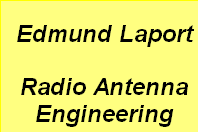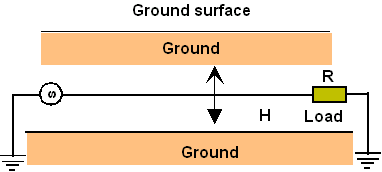

Antentop is FREE e-magazine devoted to Antennas and Amateur Radio an
Special page devoted to
Spreading and Underground Antennas

Custom Search
|
ANTENTOP- 01- 2019, # 023 |
Spreading and Underground Antennas |
|
|
|
||
|
Figure
2 Spreading Antenna |
||
|
|
|
|
|
Figure
3 Underground Antenna |
||
|
|
|
|
In the theory the underground
antenna may be considered as a kind of coaxial feedline being
created by antenna (center wire of the coaxial) and ambient soil,
as lossy braid of the coaxial. Termination
shown on the end of the coaxial line is the theoretical load that
shows losses on radiation of the center wire and losses of the
electromagnetic energy in the ground.
Depending on the conductance and the dielectric
property of the real soil and practical design of the underground
or spreading antenna, the termination load may have resistance
of 100-500 Ohms on frequencies from 2-30 MHz.
|
Sometimes for the underground and spreading antenna is
used not loaded at the end wire, as shown on the Figure 1. It is so named Quasiresonance
Antenna. Distribution
of current and voltage along the wire of the antenna is almost
similar to current distribution that is normally present in resonant
antenna. In contrast to an aperiodic antenna see Figure 2, 3) having a large bandwidth and stable
parameters, the non-loaded antenna's parameters and resonance
band are rather unstable. It is happened because the electrical length and input impedance of the
quasiresonance antenna depends on state
of soil, on or in which the antenna is installed. As usual, conditions
of the soil are vared over season of
the year and dictate by the weather- cold or hot and rain or snow.
But, sometimes, with stable soils (desert sands, frosted soil)
it is possible to have quasiresonance
antenna with stable parameters. |
|
|
|
|
|
|
Page- 7 |
||
 |
 |
|
 |
|
|
|||
Just for Fun:

Powered byIP2Location.com
Thanks for your time!
Last Updated:
December 29, 2019 23:15







